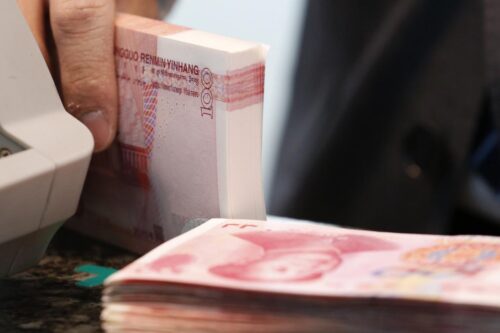>>REAL-TIME UPDATES IN THE WIRE. CLICK HERE<<<
China’s new bank loans increased sharply in September from the previous month, but lower than expected, and the structure of bank lending improved as it strives to bolster a shaky economic recovery amid tepid demand.
Chinese banks issued 2.31 trillion yuan ($316.15 billion) of new yuan loans in September, up sharply from 1.36 trillion in August, according to the data from the People’s Bank of China (PBOC). That missed 2.5 trillion yuan expected by analysts polled by Reuters and also less than the figure of 2.47 trillion yuan in September last year.
In breakdown, new household loans, including mortgages, reached 858.5 billion yuan in September, up from 392.2 billion in August and rising by 208.2 billion yuan from that in the same period last year, showed the data.
That included 321.5 billion yuan of short-term loans, which is 17.7 billion yuan higher than a year earlier, and 547 billion yuan of medium- and long-term loans, mostly home mortgage loans, which is 201.4 billion yuan higher than a year earlier.
As China announced the policy to lower the interest rates on existing home mortgage loans on August 31 and banks started to implementing the policy on September 25, households’ early repayment of home mortgage loans may have declined in September, said Cheng Qiang, chief macro analyst at CITIC Securities in a note.
New corporate loans reached 1.68 trillion yuan, rising by 734.6 billion yuan from 948.8 billion in August, but 233.9 billion yuan lower than a year earlier, showed the data.
In breakdown, short-term loans to the corporate sector increased by 565.9 billion yuan in September, medium- and long-term loans increased by 1.25 trillion yuan, while bill financing declined by 150 billion yuan.
Outstanding yuan loans in September grew 10.9% from a year earlier, which undershot forecasts and was down from 11.1% in August.
The broad measure of money supply M2 expanded 10.3% in September from a year earlier, PBOC data showed, missing the Reuters poll forecast of 10.7%, slowing from 10.6% growth in August and the 12.1% growth in the same period last year.
Annual growth of outstanding total social financing (TSF), a broad measure of credit and liquidity in the economy, hit 9% in September, unchanged from August’s rate.
TSF includes off-balance sheet forms of financing outside the conventional bank lending system, such as initial public offerings, loans from trust companies and bond sales.
In September, TSF climbed to 4.12 trillion yuan from 3.12 trillion in August, compared to 3.8 trillion yuan expected by analysts in a Reuters’ survey.
In the first three quarters of the year, banks extended 19.75 trillion yuan of new loans, rising by 1.58 trillion yuan from a year earlier, and the total social financing reached 29.33 trillion yuan during the period, rising by 1.41 trillion yuan from a year earlier, said the PBOC.
Looking ahead, the PBOC will continue to implement prudent monetary policy, closely monitor the effect of the previously announced policies, accelerate the implementation of the policy measures, said Zou Lan, head of the monetary policy department of the PBOC at a press briefing on Friday.
China’s monetary policy still has ample room to deal with unexpected challenges and changes and the PBOC will continue to conduct counter-cyclical adjustment and create an appropriate monetary and financial environment for stimulating economic vitality, he said.

